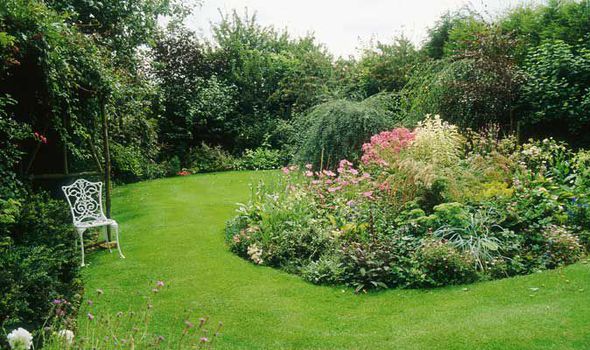Seeding and turfing
Seeding and turfing are two techniques for creating a grass lawn, which is a common feature in a garden. Both techniques require a considerable amount of care and attention.
Generally, turfing is considered to be the easiest and fastest-to-complete option. It requires less work in terms of ground preparation and the turf is provided in rolls that can be cut according to the shape required. However, there will have to be a suitably level and firm surface before the turf is laid. Roots will grow into the soil within two weeks and the resulting lawn can be useable within three weeks.
Other advantages of turfing include that in heavy rain it will not wash off sloped ground as seed might, it is less prone to attack by birds, there is less watering required, and turf can be laid at any time of the year. The disadvantages are that it can be expensive for large areas and it requires fast laying once it has been delivered.
Seeding a lawn is more difficult and preparing the ground is more time-consuming. Seeding involves the removal of stones down to a maximum diameter of no larger than 1 cm, whereas turfing can leave stones of up to 3-4 cm in diameter.
It can take 3-4 months to grow into a useable lawn from seed, and this can be longer depending on the weather conditions. It also requires more aftercare during the first month than turf.
The advantages of seeding are that it is less expensive and time-consuming than turfing, and it is generally the most suitable option for small areas of ground or for repairing lawns. It is also more durable and can be easily reseeded as required.
NB Short Guide, Lime Mortars in Traditional Buildings, published on 1 March 2013 by Historic Scotland, defines seeding as: ‘The nucleation of lime crystals on the surface of particles (usually of the same composition). Seeding particles can act like a catalyst, speeding up the carbonation of lime mortars.’
[edit] Related articles on Designing Buildings
Featured articles and news
Restoring Great Yarmouth's Winter Gardens
Transforming one of the least sustainable constructions imaginable.
Construction Skills Mission Board launch sector drive
Newly formed government and industry collaboration set strategy for recruiting an additional 100,000 construction workers a year.
New Architects Code comes into effect in September 2025
ARB Architects Code of Conduct and Practice available with ongoing consultation regarding guidance.
Welsh Skills Body (Medr) launches ambitious plan
The new skills body brings together funding and regulation of tertiary education and research for the devolved nation.
Paul Gandy FCIOB announced as next CIOB President
Former Tilbury Douglas CEO takes helm.
UK Infrastructure: A 10 Year Strategy. In brief with reactions
With the National Infrastructure and Service Transformation Authority (NISTA).
Ebenezer Howard: inventor of the garden city. Book review.
The Grenfell Tower fire, eight years on
A time to pause and reflect as Dubai tower block fire reported just before anniversary.
Airtightness Topic Guide BSRIA TG 27/2025
Explaining the basics of airtightness, what it is, why it's important, when it's required and how it's carried out.
Construction contract awards hit lowest point of 2025
Plummeting for second consecutive month, intensifying concerns for housing and infrastructure goals.
Understanding Mental Health in the Built Environment 2025
Examining the state of mental health in construction, shedding light on levels of stress, anxiety and depression.
The benefits of engaging with insulation manufacturers
When considering ground floor constructions.
Lighting Industry endorses Blueprint for Electrification
The Lighting Industry Association fully supports the ECA Blueprint as a timely, urgent call to action.



















